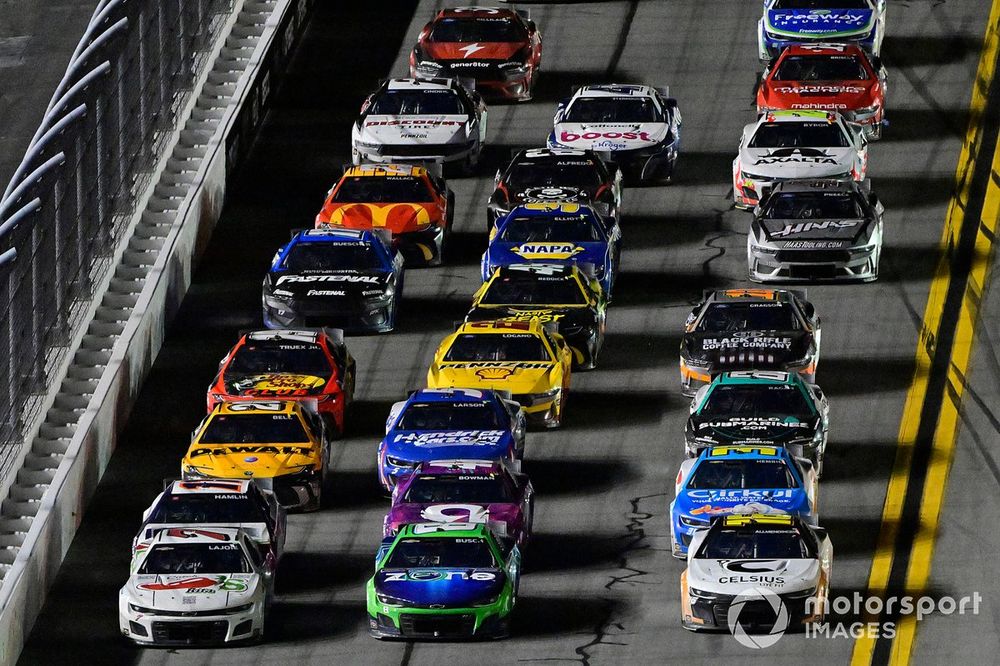There is some debate whether the issue is even a “problem” that needs to be addressed but when NASCAR officials said publicly last week the sanctioning body was “reviewing” it, the attention magnified.
Kyle Busch, for one, was not happy with how the race strategy played out on Monday’s rain-delayed 500.
“I believe it’s a problem,” Busch said. “The start of the race last weekend for the Daytona 500 – we’re all sitting around there running half-throttle; not passing and just riding in a line.
“I felt disgraceful, myself, being a race car driver – wanting to go fast, lead laps and win the Daytona 500, and that was our strategy that we had to employ at the start of the race because everybody was doing it.”
Corey LaJoie, Spire Motorsports, Chili’s Catch-a-Rita Chevrolet Camaro, Kyle Busch, Richard Childress Racing, Zone Chevrolet Camaro, AJ Allmendinger, Kaulig Racing, Celsius Chevrolet Camaro
Photo by: Nigel Kinrade / NKP / Motorsport Images
More so than in recent seasons, teams elected to ask their drivers to save fuel – almost from the beginning of the race – as a way to help gain track position during green flag pit stops when they could spend less time on pit road.
There were times – especially in the first two stages – when cars were running laps three seconds or more slower than typical.
“I felt bad for the fans. This is not good for them,” Busch said. “It’s not what I want to be doing. But when you kind of get in that situation, I don’t know what you do.
“The third lane could have developed. It was so early in the race; nobody wanted to develop a third lane. It’s a 500-mile race, we don’t want to blow everything up in the first stage, right?
“But somebody could have just pulled out into the outside lane and literally just ran to the front and done whatever they wanted to do. So, I was surprised nobody did that.”
What’s the solution?
The issue became more prominent in part because the 500 featured fewer cautions than normal and its common multi-car wrecks were missing until late in the final stage.
In addition, tire wear is usually non-existent on superspeedway races, which means teams that do make green flag stops are often taking just fuel-only.
Most drivers said they were sure there was a “solution” to the issue, although Busch suggested the use of smaller fuel cells – which would produce more pit stops – could alter the strategy play.
“You’re…
Click Here to Read the Full Original Article at Motorsport.com – NASCAR – Stories…

